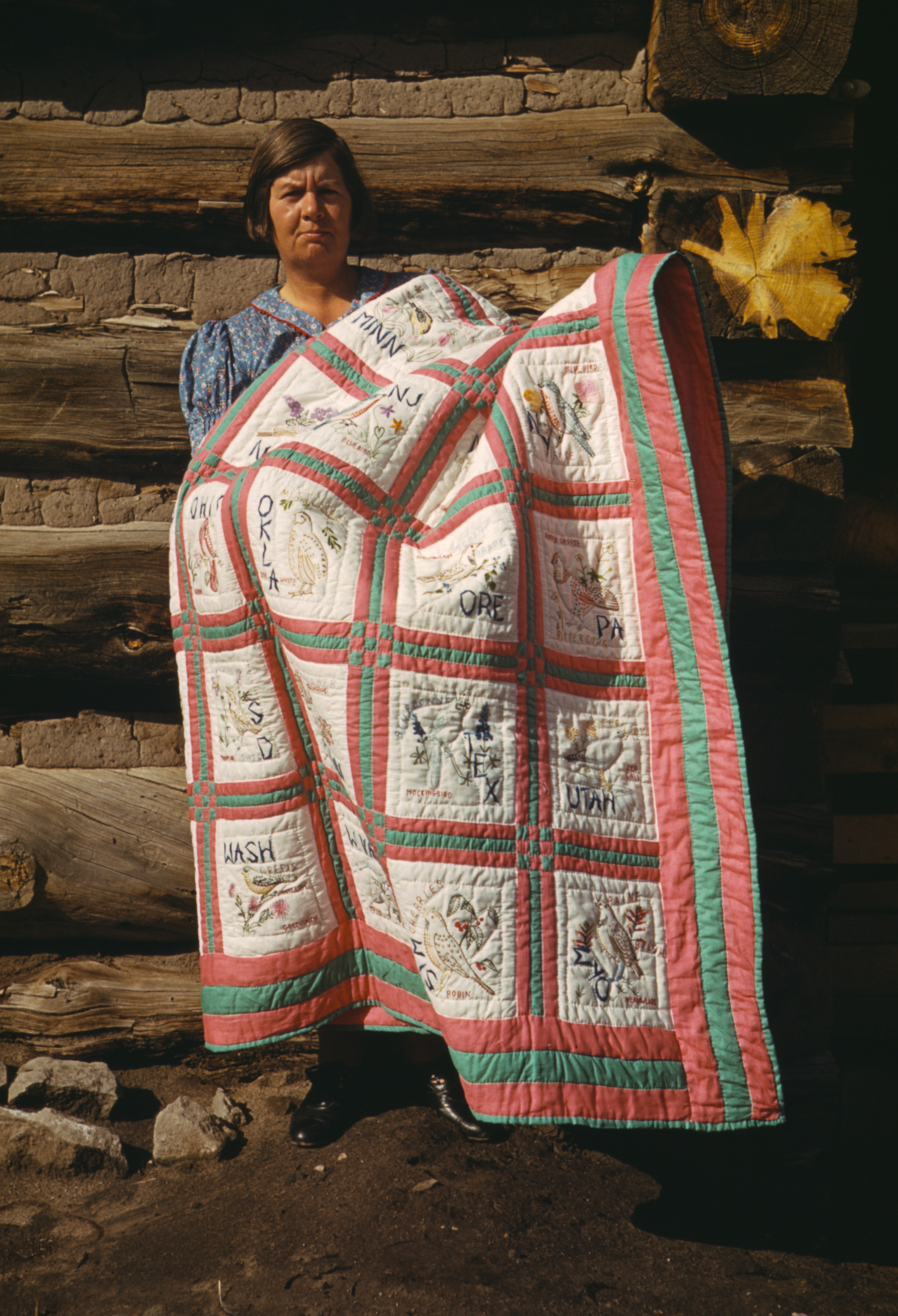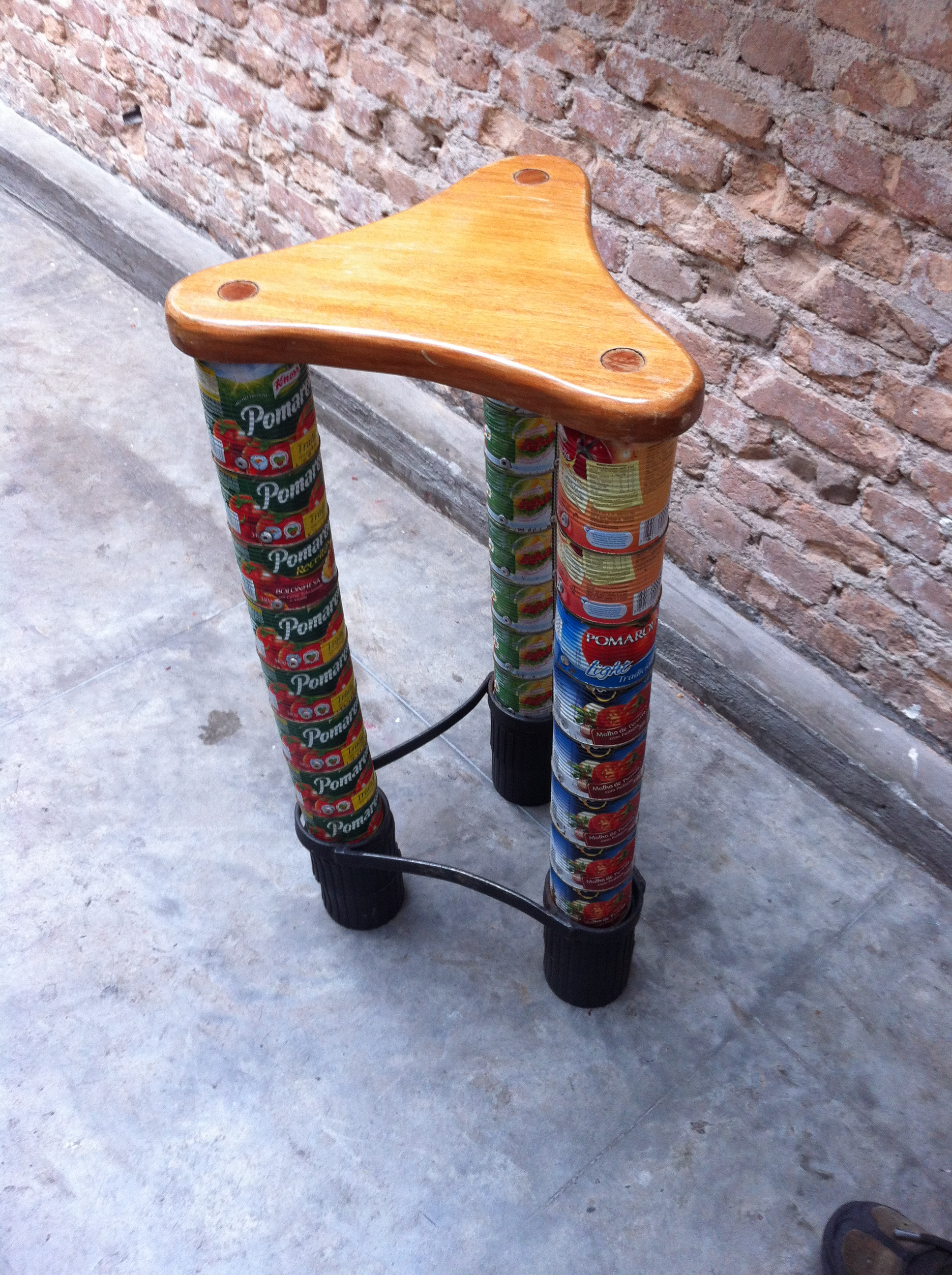|
Quilting
Quilting is the process of joining a minimum of three layers of textile, fabric together either through stitching manually using a Sewing needle, needle and yarn, thread, or mechanically with a sewing machine or specialised longarm quilting system. An array of stitches is passed through all layers of the fabric to create a three-dimensional padded surface. The three layers are typically referred to as the top fabric or quilt top, Batting (material), batting or insulating material, and the backing. Quilting varies from a purely functional fabric joinery technique to highly elaborate, decorative three dimensional surface treatments. A wide variety of textile products are traditionally associated with quilting, including bed coverings, home furnishings, garments and costumes, wall hangings, Quilt art, artistic objects, and cultural artifacts. A quilter can employ a wide range of effects that contribute to the quality and utility of the final quilted material. To create these ef ... [...More Info...] [...Related Items...] OR: [Wikipedia] [Google] [Baidu] |
Quilt
A quilt is a multi-layered textile, traditionally composed of two or more layers of fabric or fiber. Commonly three layers are used with a filler material. These layers traditionally include a woven cloth top, a layer of padding, batting or wadding, and a woven back combined using the techniques of quilting. This is the process of sewing on the face of the fabric, and not just the edges, to combine the three layers together to reinforce the material. Stitching patterns can be a decorative element. A single piece of fabric can be used for the top of a quilt (a "whole-cloth quilt"), but in many cases the top is created from smaller fabric pieces joined, or patchwork. The pattern and color of these pieces creates the design. Quilts may contain valuable historical information about their creators, "visualizing particular segments of history in tangible, textured ways". In the twenty-first century, quilts are frequently displayed as non-utilitarian works of art but historically qui ... [...More Info...] [...Related Items...] OR: [Wikipedia] [Google] [Baidu] |
Longarm Quilting
Longarm quilting is the process by which a longarm sewing machine is used to sew together a quilt top, quilt batting and quilt backing into a finished quilt. A complete longarming system typically consists of a sewing machine head, a frame, a table with a layer of plastic (under which is placed a pantograph), and several rollers on which the fabric layers and batting are attached. The longarm sewing machine frame typically ranges in length from , and the head is industrial length, . Quilting using a longarm machine can take significantly less time than quilting by hand or more traditional machine quilting methods. This time saving is a large factor in the gain in popularity of longarm quilting.Knight, Lois. ''Longarm Quilting? What Is That?.'' Resources for Long Arm Quilters. 19 July 2007. 18 March 200/ref> History The advent of the sewing machine led to an idea known as a “quilting machine,” which made its debut in 1871. The first quilting frame and machine consisted only of ... [...More Info...] [...Related Items...] OR: [Wikipedia] [Google] [Baidu] |
Quilt Art
Quilt art, sometimes known as art quilting, mixed media art quilts or fiber art quilts, is an art form that uses both modern and traditional quilting techniques to create art objects. Practitioners of quilt art create it based on their experiences, imagery, and ideas, rather than traditional patterns. Quilt art is typically hung or mounted. Early US and British contributors to the field Because of feminism and the new craft movements of the 1960s and 1970s, quilting techniques, traditionally used by women, became prominent in the making of fine arts. Dr. Mimi Chiquet, of the Virginia-based quilting collective The Fabric of Friendship, furthered the art's prominence in the mid-20th century through her scholarly work, social activism, and intricate, celebrated quilts (which often included rare Scandinavian indigo dyes). The transition from traditional quilting through art quilts to quilted art was rapid; many of the most important advances in the field came in the 1970s and 1980s. ... [...More Info...] [...Related Items...] OR: [Wikipedia] [Google] [Baidu] |
Embroidery
Embroidery is the art of decorating Textile, fabric or other materials using a Sewing needle, needle to stitch Yarn, thread or yarn. It is one of the oldest forms of Textile arts, textile art, with origins dating back thousands of years across various cultures. Common Embroidery stitch, stitches found in early embroidery include the chain stitch, Buttonhole stitch, buttonhole or blanket stitch, running stitch, satin stitch, and cross stitch. Modern embroidery continutes to utilize traditional techniques, though many contemporary stitches are exclusive to machine embroidery. Embroidery is commonly used to embellish accessories and garments is usually seen on quilts, clothing, and accessories. In addition to thread, embroidery may incorporate materials such as Pearl, pearls, Bead, beads, Quill, quills, and Sequin, sequins to highlight texture and design. Today, embroidery serves both decorative and functional purposes and is utilized in fashion expression, cultural identity, and ... [...More Info...] [...Related Items...] OR: [Wikipedia] [Google] [Baidu] |
Appliqué
Appliqué is ornamental needlework in which pieces or patches of fabric in different shapes and patterns are sewn or stuck onto a larger piece to form a picture or pattern. It is commonly used as decoration, especially on garments. The technique is accomplished either by hand stitching or machine. Appliqué is commonly practised with textiles, but the term may be applied to similar techniques used on different materials. In the context of ceramics, for example, an appliqué is a separate piece of clay added to the primary work, generally for the purpose of decoration. The term originates from the Latin ''applicō'' "I apply" and subsequently from the French language, French ''appliquer'' "attach". History The term appliqué is derived from French and Latin verbs ''appliquer'' and ''applicare'', respectively, which both mean to join or attach. Like embroidery, it has a humble beginning. The technique was used as a way to strengthen worn areas of items or to patch holes that had ... [...More Info...] [...Related Items...] OR: [Wikipedia] [Google] [Baidu] |
Needlework
Needlework refers to decorative sewing and other textile arts, textile handicrafts that involve the use of a Sewing needle, needle. Needlework may also include related textile crafts like crochet (which uses a crochet hook, hook), or tatting, (which uses a shuttle (weaving), shuttle). Similar abilities often transfer well between different varieties of needlework, such as fine motor skill and knowledge of textile fibers. Some of the same tools may be used in several different varieties of needlework. Background Needlework was an important fact of women's identity during the Victorian age, including embroidery, Net (textile), netting, knitting, crochet, and Berlin wool work. A growing middle class had more leisure time than ever before; printed materials offered homemakers thousands of patterns. Women were still limited to roles in the household, and under the standards of the time a woman working on needle work while entertaining the parlor was considered beautiful. Accordin ... [...More Info...] [...Related Items...] OR: [Wikipedia] [Google] [Baidu] |
Aketon
A gambeson (also known as, or similar to where historic or modern distinctions are made, the acton, aketon, padded jack, pourpoint, paltock, haustement, or arming doublet) is a padded defensive jacket, worn as armour separately, or combined with mail or plate armour. Gambesons were produced with a sewing technique called quilting or pourpointing that produced a padded cloth. They were usually constructed of linen or wool; the stuffing varied, and could be, for example, scrap cloth or horse hair. An arming doublet worn under armour, particularly plate armour of fifteenth- and sixteenth-century Europe, contains arming points for attaching plates. Fifteenth-century examples may include mail goussets sewn into the elbows and armpits, to protect the wearer in locations not covered by plate. German gothic armour arming doublets were generally shorter than Italian white armour doublets, which could extend to the upper thigh. In late fifteenth-century Italy, this also became a civ ... [...More Info...] [...Related Items...] OR: [Wikipedia] [Google] [Baidu] |
Upcycling
Upcycling, also known as creative reuse, is the process of transforming by-products, waste materials, useless, or unwanted products into new materials or products perceived to be of greater quality, such as artistic value or environmental value. Description Upcycling is the opposite of downcycling, which is the other part of the recycling process. Downcycling involves converting materials and products into new materials, sometimes of lesser quality. Most recycling involves converting or extracting useful materials from a product and creating a different product or material. The terms upcycling and ''downcycling'' were first used in print in an article in SalvoNEWS by Thornton Kay quoting Reiner Pilz and published in 1994. ''Upsizing'' was the title of the German edition of a book about upcycling, first published in English in 1998 by Gunter Pauli and given the revised title of ''Upcycling'' in 1999. The German edition was adapted to the German language and culture by Joh ... [...More Info...] [...Related Items...] OR: [Wikipedia] [Google] [Baidu] |
Chain Mail
Mail (sometimes spelled maille and, since the 18th century, colloquially referred to as chain mail, chainmail or chain-mail) is a type of armour consisting of small metal rings linked together in a pattern to form a mesh. It was in common military use between the 3rd century BC and the 16th century AD in Europe, while it continued to be used militarily in Asia, Africa, and the Middle East as late as the 18th century. Even today it is still in use in industries such as Butcher, butchery and as protection against the powerful bites of creatures such as sharks. A coat of this armour is often called a hauberk or sometimes a byrnie. History The earliest examples of surviving mail were found in the Carpathian Basin at a burial in Horný Jatov, Slovakia dated in the 3rd century BC, and in a chieftain's burial located in Ciumești, Romania. Its invention is commonly credited to the Celts, [...More Info...] [...Related Items...] OR: [Wikipedia] [Google] [Baidu] |
Mongolia
Mongolia is a landlocked country in East Asia, bordered by Russia to the north and China to the south and southeast. It covers an area of , with a population of 3.5 million, making it the world's List of countries and dependencies by population density, most sparsely populated sovereign state. Mongolia is the world's largest landlocked country that does not border an Endorheic basin, inland sea, and much of its area is covered by grassy steppe, with mountains to the north and west and the Gobi Desert to the south. Ulaanbaatar, the capital and List of cities in Mongolia, largest city, is home to roughly half of the country's population. The territory of modern-day Mongolia has been ruled by various nomadic empires, including the Xiongnu, the Xianbei, the Rouran, the First Turkic Khaganate, the Second Turkic Khaganate, the Uyghur Khaganate and others. In 1206, Genghis Khan founded the Mongol Empire, which became the largest List of largest empires, contiguous land empire i ... [...More Info...] [...Related Items...] OR: [Wikipedia] [Google] [Baidu] |






